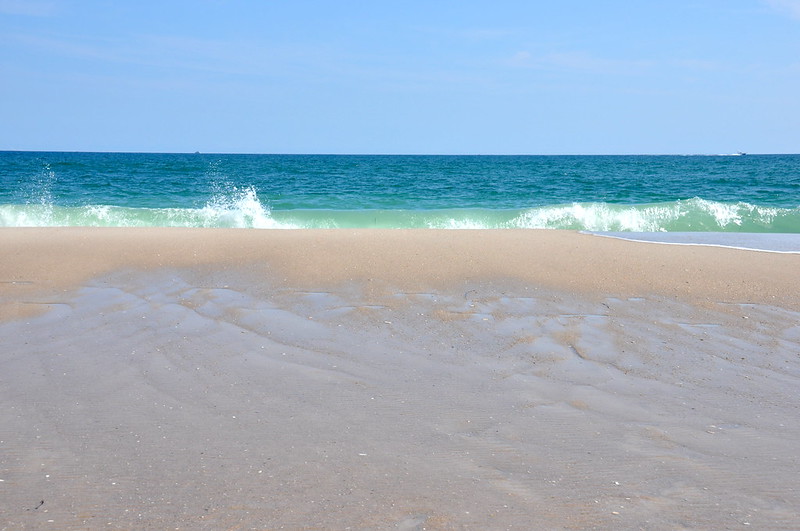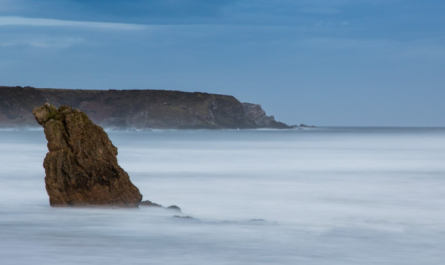The Atlantic Ocean, stretching from the icy waters of the Arctic to the warm shores of the Caribbean and South America, has long inspired writers, poets, and thinkers. Its vastness, mystery, and the powerful contrast between calm seas and tempestuous storms have made it a literary symbol of adventure, longing, conflict, and reflection. From tales of brave explorers and naval battles to introspective meditations on the ocean’s beauty and danger, the Atlantic has left an indelible mark on literature across centuries and genres.
This article explores the profound influence of the Atlantic Ocean on literature, examining how writers and poets have drawn inspiration from its depths and expanses. We’ll look at key themes the Atlantic embodies, explore works where the ocean plays a central role, and uncover why the Atlantic continues to fascinate writers to this day.
The Atlantic as a Symbol of Exploration and Discovery
In the Age of Exploration, the Atlantic Ocean was the frontier, a mysterious expanse that separated Europe from the New World. For writers and poets of that era, it became a symbol of adventure, curiosity, and the unknown. Stories of explorers like Christopher Columbus and Sir Francis Drake were documented and celebrated, with the Atlantic serving as the stage for these daring journeys. Literature from this period often portrays the Atlantic as both a barrier and a bridge—something to be conquered, yet also a powerful force that had to be respected.
Key Works and Authors
- William Shakespeare’s “The Tempest”: Although not explicitly set on the Atlantic, Shakespeare’s play reflects the themes of shipwreck and discovery, likely inspired by reports of Atlantic voyages. The magical island where the play is set is often interpreted as an unknown land across the sea, perhaps reflecting England’s growing interest in Atlantic exploration.
- Edmund Spenser’s “The Faerie Queene”: In this epic poem, Spenser often refers to seas and voyages as metaphors for life’s trials. Though the Atlantic is not specifically mentioned, the ocean serves as a symbol of the challenges that English explorers faced during their expeditions to the New World.
- Jules Verne’s “Twenty Thousand Leagues Under the Sea”: While primarily focused on the mysteries of the ocean itself, Verne’s novel includes notable scenes in the Atlantic, where Captain Nemo and his submarine, the Nautilus, encounter both wonders and dangers. Verne’s work is an early example of science fiction that uses the Atlantic to explore human curiosity and the desire to conquer nature.
The Atlantic as a Frontier of Conflict and Empire
The Atlantic also represents centuries of conflict, as European powers vied for control over colonies in the Americas, and piracy was rampant on its waves. The transatlantic slave trade, which brought about unimaginable suffering, is another dark aspect of the Atlantic’s history that literature has addressed. In the context of empire, colonization, and trade, the Atlantic has been a witness to human triumphs and tragedies, and writers have used it to explore these complex themes.
Key Works and Authors
- Herman Melville’s “Moby-Dick”: Melville’s classic tale of obsession and revenge is set in the Atlantic and the wider oceans, as Captain Ahab hunts the elusive white whale. The Atlantic serves as a backdrop for much of the novel, symbolizing the unpredictable and often hostile forces of nature and humanity’s hubris.
- Olaudah Equiano’s “The Interesting Narrative of the Life of Olaudah Equiano”: Equiano’s autobiography recounts his journey as a young African man kidnapped into slavery and transported across the Atlantic. His harrowing experience offers one of the earliest personal accounts of the transatlantic slave trade, using the Atlantic as both a physical and symbolic marker of loss, displacement, and resilience.
- C.S. Forester’s “Horatio Hornblower” series: Set during the Napoleonic Wars, this series of novels follows a British naval officer who faces battles and moral dilemmas while navigating the Atlantic. Forester’s portrayal of the Atlantic captures its role in military strategy and as a theater for naval warfare, reflecting its historical importance in shaping empires.
The Romantic Atlantic: A Source of Awe and Sublimity
During the Romantic period in the late 18th and early 19th centuries, the Atlantic Ocean took on new meanings in literature, embodying the sublime—a concept that combines beauty, terror, and vastness. Romantic writers and poets saw the Atlantic as a place where one could confront nature’s power and mystery. The ocean became a mirror for the human soul, offering a sense of awe and spiritual reflection, often tinged with melancholy.
Key Works and Authors
- Samuel Taylor Coleridge’s “The Rime of the Ancient Mariner”: Coleridge’s famous poem follows a mariner who kills an albatross and brings a curse upon his ship. The Atlantic, where much of the poem is set, becomes a surreal, almost supernatural space. The vast ocean reflects the mariner’s inner torment, while the poem explores themes of guilt, penance, and redemption.
- Lord Byron’s “Childe Harold’s Pilgrimage”: Byron’s semi-autobiographical poem reflects his travels across Europe and the Mediterranean, with passages inspired by the power and mystery of the Atlantic. Byron’s Romantic view of the ocean portrays it as an endless source of inspiration and a metaphor for the restlessness and search for meaning that defined the Romantic spirit.
- Emily Dickinson’s Atlantic-inspired poems: Though she never saw the ocean herself, Emily Dickinson often wrote about it in her poetry, creating images of the Atlantic’s beauty and vastness. Her ocean-inspired works, like “Exultation is the going,” reflect her fascination with the Atlantic’s mysterious allure and convey a sense of both yearning and acceptance.
The Atlantic as a Symbol of Immigration and Hope
The Atlantic has also been central in narratives of immigration, particularly during the 19th and early 20th centuries, when millions crossed the ocean seeking new lives in America. For these immigrants, the Atlantic was a path to hope, opportunity, and often escape from hardship. Yet, it also represented separation from one’s homeland and the challenges of starting anew.
Key Works and Authors
- Paddy’s Lament by Thomas Gallagher: This historical account describes the journey of Irish immigrants fleeing famine in the 1840s. The Atlantic voyage becomes a harrowing passage, filled with peril, and yet it also embodies the hope for a better future. The ocean in Gallagher’s account is both an obstacle and a bridge between the old and new worlds.
- Anzia Yezierska’s “Bread Givers”: Though the novel largely focuses on the immigrant experience in America, Yezierska references the Atlantic crossing as a transformative experience for those seeking new lives. For her characters, the ocean represents the distance between their past and future identities, highlighting the sense of loss and reinvention associated with immigration.
- Gabriel García Márquez’s “One Hundred Years of Solitude”: In this iconic Latin American novel, the Atlantic is mentioned as a symbol of colonial influence and the connection between Europe and Latin America. The journey across the Atlantic reflects cultural exchanges that shaped the Caribbean and South American regions, blending themes of migration, conquest, and heritage.
Modern Reflections: The Atlantic as a Space of Environmental Concern
In contemporary literature, the Atlantic is often portrayed in the context of environmental awareness and climate change. Rising sea levels, pollution, and overfishing have become central themes, as writers use the ocean to explore humanity’s impact on the environment. This shift reflects a growing recognition of the need to protect the Atlantic and its ecosystems, highlighting the importance of sustainable practices.
Key Works and Authors
- Rachel Carson’s “The Sea Around Us”: Although it explores all oceans, Carson’s work was among the first to bring attention to the need for ocean conservation, particularly the Atlantic. Her lyrical descriptions of the sea emphasize its beauty while raising awareness of the threats it faces, bridging the gap between science and poetry.
- Elizabeth Bishop’s “At the Fishhouses”: In this poem, Bishop reflects on the cold Atlantic waters of Nova Scotia and the fishing industry’s impact on the environment. The poem captures both the ocean’s allure and its vulnerability, hinting at the consequences of human activity on the marine world.
- Monique Roffey’s “Archipelago”: This novel explores climate change through the story of a family navigating the Caribbean and the Atlantic. Roffey’s narrative highlights the impacts of environmental degradation on communities living close to the ocean, using the Atlantic as both a literal and symbolic space of ecological challenges.
The Timeless Allure of the Atlantic Ocean in Literature
The Atlantic’s powerful influence on literature stems from its dual nature as both a physical space and a symbolic one. It is an ocean of contradictions: a place of hope and despair, beauty and terror, adventure and loss. Writers and poets have captured these complexities, drawing on the Atlantic to tell stories of personal and collective experience, whether through tales of exploration, romance, immigration, or environmental reflection.
The Atlantic’s enduring presence in literature demonstrates its timeless relevance. The ocean remains a source of wonder, a reminder of humanity’s smallness in the face of nature, and a testament to our quest for knowledge and meaning. From Shakespeare’s time to today, the Atlantic’s waves have continued to inspire, challenge, and connect those who seek to understand it.
Conclusion: Why the Atlantic Still Inspires
The Atlantic Ocean has left a profound mark on literature, offering a wealth of themes and symbols that writers and poets have embraced for centuries. It serves as a vast metaphor for the unknown, the uncontrollable, and the deeply personal. In a time of global connectivity and environmental awareness, the Atlantic continues to inspire writers to address both the timeless and the urgent—its boundless horizons representing both the vast possibilities and fragile realities of the human experience.
Whether seen as a realm of adventure, a space of reflection, or a site of environmental concern, the Atlantic will continue to inspire literary minds for generations to come. Through its beauty, its power, and its ever-changing nature, it reminds us that, like the ocean, literature has the ability to cross borders, connect souls, and bridge time itself.



